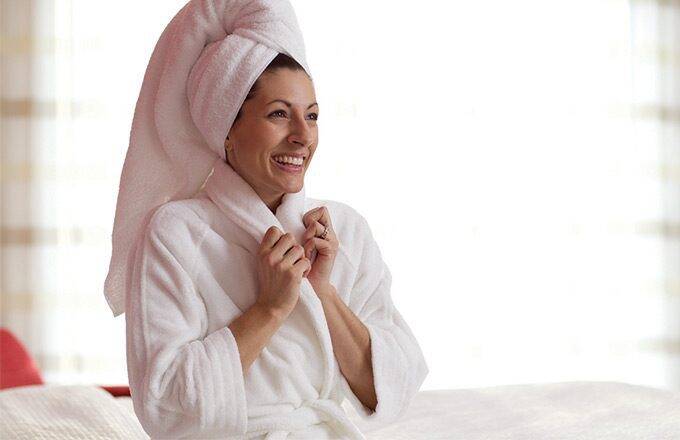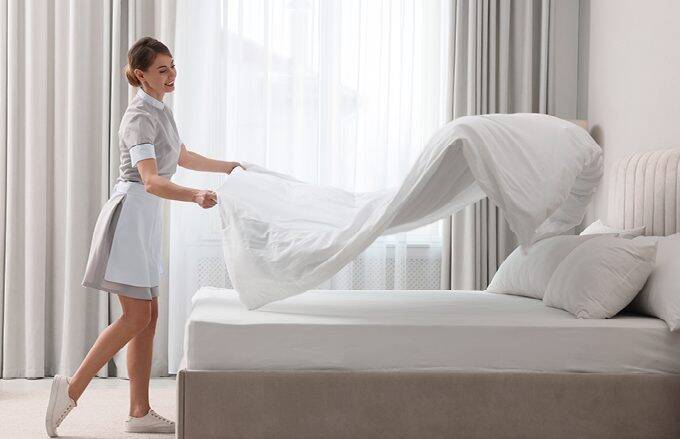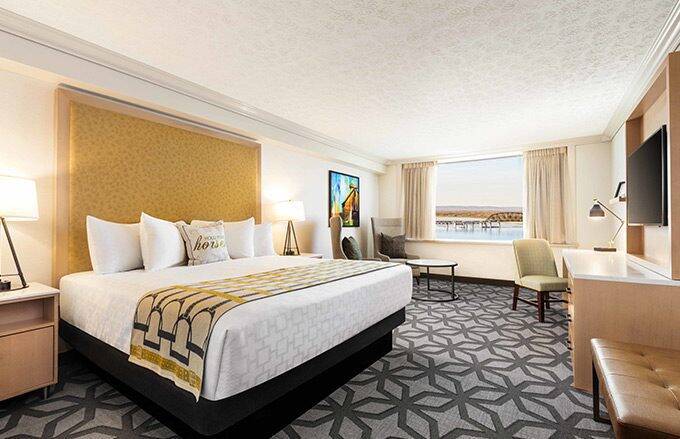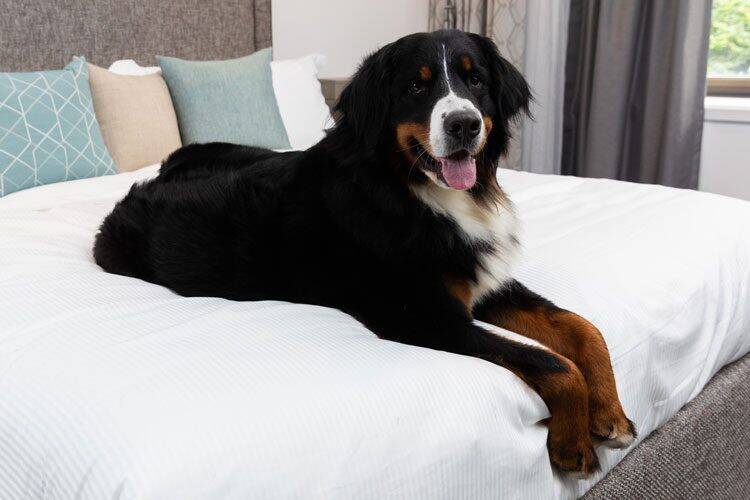August 27, 2019
Improving Guest Experience with Better Textiles

When developing the annual North American Hotel Guest Satisfaction Index Study (NAGSI), J.D. Power evaluates seven key factors in each hotel segment, including: guest room, food and beverage, hotel services, hotel facilities, and cost and fees.
According to the 2018 NAGSI, the largest driver for growth in guest satisfaction centered around product satisfaction, specifically guest rooms and hotel facilities.
In our Hospitality and our Interiors groups, discussions around guest room and hotel facility satisfaction for luxury, midscale, and economy accommodations are daily occurrences.
In Part 1 of this series on Guest Satisfaction, let’s focus on the guest room experience and how we go about Improving Guest Experience with Better Textiles.
Guest Experience Must Haves
Savvy hotels, motels, B&Bs, and resorts all have the same guest-service goal: to provide them with an outstanding experience that leads to rave reviews and loyal return visits. Our hospitality customers tell us that the top drivers for guest satisfaction and experience are cleanliness, followed closely by comfort.
And while hoteliers continually strive to upgrade the guest experience—say, with plush bath terry, soft luxury sheets, or designer robe—they are also under continuous pressure to find ways to reduce overall system cost all while maintaining or improving cleanliness and comfort.
Does Improved Guest Experience Equal Higher Costs?
In the article “The Standard of Success: Guest Satisfaction” published in the magazine fresh by the Association of Linen Management, Greg Eubanks, VP of Hospitality Sales and Marketing at Standard Textile, says, “Besides hotel cleanliness, the sleep and bath experience of a hotel guest is the most important barometer to key guest satisfaction scores.”
The article provides an exceptional overview of key factors that drive positive guest experiences while managing costs for hospitality textiles. Here’s our take on those four items.
Four Factors to Improve Guest Experience While Managing Textile Costs
1. Quality of Linen
A number of factors go into determining linen quality, from fiber and weaving, to processing and finishing. While customer requirements and expectations vary based on the property category, it’s a safe assumption that all guests expect stain-free, tear-free linens.
In the article, Kathy Harris, laundry manager at Sea Island Resort in Georgia, says, “These products can look good out of the box, but may quickly degrade after a few cycles.” That’s why we recommend our customers complete their own comparison testing to ensure consistency and longevity.
2. Maintaining Par Levels
Our in-house research finds that most hospitality properties keep a par level of 2 or 3 on hand, while luxury hotels are more likely to have 3 par.
Par levels impact more than the daily stress of ensuring linens are available the moment a guest room needs refreshing. While it seems counterintuitive, keeping the right par levels is also critical to making sheeting and terry last. “Most linens are manufactured using a high degree of natural fiber, such as cotton. Cotton requires 24 hours after processing to regain natural moisture from the air,” shares Eubanks.
Eubanks continues, “Adequate ‘down time’ for a textile can increase tensile strength, which increases linen life.” If par levels are too low, sheets and towels need to be returned to service faster. However, if not processed correctly, they don’t have the longevity they otherwise would have.
We typically recommend a minimum of 3 par. While the upfront investment in appropriate par levels might be higher, the product life is extended and a higher return on investment is achieved.
3. The Laundry Process
At Standard Textile, we know the laundry process inside and out. Even with innovations designed to hold up to aggressive washing, industrial ironers, and chemical processing, product damage or loss can still occur.
Ensure that your wash process, chemistry, loading parameters, and finishing procedures are appropriate for the products being washed and are managed correctly. Work with your chemical provider, if necessary, to ensure that your programs and wash formula are optimized for your different load types.
4. Training Your Team
At the end of the day, guest satisfaction is dependent on your team. Industrial hotel laundering is tough work. Make sure your teams have the tools and training they need to complete their jobs in a safe and timely manner.
Standard Textile laundry experts can offer specific recommendations and provide training. Alternatively, we invite our partners to tour our CORE Textile Processing & Operations Center for laundry support or training.
Start Improving Guest Experience with Better Textiles Today
These four factors offer easy ways to improve guest experience while reducing costs. We look forward to continuing the discussion on improving guest experience through room and hotel décor.
Related Content

Time and Motion Study | How to Help Hotel Housekeeping Improve Efficiency
For many properties, a housekeeping time and motion study is a useful tool to help evaluate the housekeeping process and potentially improve efficiency.

The Galt House Shares Experience with Standard Textile’s AllerEase® Professional
In this article, Terry Bechtold, VP of Operations at AJS Hotels, owner and operator of The Galt House shared how The Galt House and their other portfolio hotels address cleanliness, both pre-COVID and today, as well as how Standard Textile’s AllerEase® Professional mattress encasements have contributed to cleanliness and reduced burdens on their housekeeping staff.

Stop Allergens from Ruining Your Guest Experience
Are you prepared to deal with allergens before they affect your guests? Here are 3 ways to avoid allergens from collecting in your rooms.